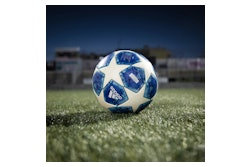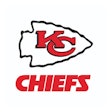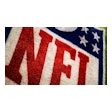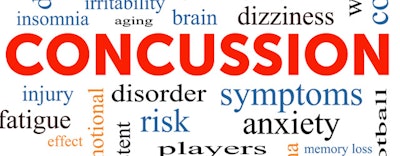
Kudos are in order for the National Athletic Trainers' Association (NATA) for updating its position statement on the management of sports concussions, originally published in 2004. NATA's intent to provide more comprehensive guidance is critical today as athletic programs across the United States contend with the rapid convergence of concussion awareness, legal compliance and the short- and long-term risks associated with brain trauma.
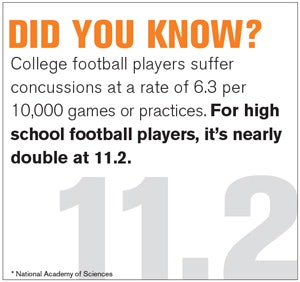
I have suffered a sports-related concussion and dealt with the incident's aftereffects of temporary memory loss and confusion. While otherwise fully functional, I was compelled to study the brain and become a neurologist. Since then, I've invested more than 25 years into understanding the cognitive consequences of concussions, treating hundreds of concussed patients.
Based on my own experience and the numerous cases I've personally attended to, along with a review of concussion science and opinion, I'm beginning to see areas in which concussion guidelines for any sports program can be enhanced. Following are my recommendations that complement the NATA guidelines both on and off the field.
COMPLIANCE IS KEY
It's one thing to establish a policy or even a law, but it's another to follow it. Every state in the U.S. now has enacted student-athlete concussion-related laws, but who is monitoring those laws? What are the repercussions for not following them? The stakes are too high for laws to go unmonitored. With so much on the line, the most important key to successfully protecting athletes from short- and long-term brain damage is to establish and comply with a concussion-management program rooted in science.
Each organization needs to monitor its concussion management and personnel like it monitors its bottom line. Typically, this would require having a single person responsible for the concussion protocols, providing some level of reporting for supervisory staff to review. Based on feedback, the protocols could be modified as needed. I recommend each athletics program, even non-school-sponsored programs, appoint a concussion coordinator to oversee the concussion-management process, including equipment, education and baseline testing. This individual would also administer and report concussion-related activities. The concussion coordinator could be an athletic trainer or someone else affiliated with the program solely focused on the brain health of the athlete.
STANDARDIZATION OF METHODS
The old saying goes, "If you ask 10 doctors the same question, you'll get 10 different answers." Unfortunately, concussions vary from person to person, and symptoms often don't materialize until several hours or days afterward. A consistent application of methods for education, prevention, detection and protection from concussions is needed.
The good news is that, through advances in medical science, there has been a convergence of guidelines for the management of sports concussions. The lack of standardization of methods, however, has placed athletic trainers in difficult positions to decipher what should be implemented. I fear many athletic trainers still use outdated learning tools and techniques.
For example, almost every state requires parents and athletes to receive concussion awareness education. Often this is simply a printed sheet they have to sign before the athlete can play. In the end, how can we verify the parents and athletes actually read the forms they sign? How can we confirm the right people are receiving the right education and comprehending the material?
Online educational tools can cover the areas of concussion awareness that are necessary for adequate levels of education. A quiz to demonstrate an acceptable level of understanding should be required.
The same goes with detection. There are a few telltale signs an athlete may be reeling from a concussion, like a dazed, vacant stare or a wobbly walk. But after they've "shaken it off," what methods should be implemented to measure the severity of concussion and help guide the return-to-play decision?
Several tools, tests and protocols are available, leaving the athletic trainer or concussion coordinator with the task of deciding what's best for his or her program. Therein lies the problem, because it's a monumental task of navigating the array of opinions and making quality, informed decisions. "Best practices" for concussion management remains a moving target.
Ideally, athletic trainers or concussion coordinators would utilize a fully integrated, comprehensive, clinical-caliber protocol for managing concussions. This single resource should integrate recommendations from the best standards of care issued by the most respected organizations in the field, including NATA, the National Academy of Sports Medicine, the American Academy of Neurology, the American Academy of Pediatrics, and the International Conference on Concussion in Sport.
The ideal program covers the entire concussion-management workflow from the beginning of the season to the end, including monitored educational activities, enhanced baseline testing, a sideline-assessment mobile app that includes balance testing, post-injury symptom checking, and recovery guidance tracking balance, symptoms and cognitive functions. This program should also integrate previously administered baseline test results with post-injury monitoring to establish the level of severity, risk, and a recovery path and timeline.
RETURN-TO-PLAY CLEARANCE
Concussion management is an emerging field. Many general practitioners and emergency room doctors are not fully aware of current concepts and guidelines to detect and manage concussions, but that doesn't mean that they can't be fully aware of these guidelines. A recent study measuring the "self-reported knowledge, practices and attitudes about concussions," published in the AAP journal Pediatrics, concluded the following:
"Although pediatric primary care and emergency medicine providers regularly care for concussion patients, they may not have adequate training or infrastructure to systematically diagnose and manage these patients. Specific provider education, decision-support tools and patient information could help enhance and standardize concussion management."
Another study, this one conducted by the University of Washington, highlighted the need for primary care providers to seek concussion education and gain access to standardized guidelines to care for athletes in the best possible way. Sara Chrisman, M.D., who led the study, concluded that laws requiring return-to-play decisions be made by medical personnel are "not useful if clinicians do not recognize concussions or are unaware of RTP guidelines and allow athletes to return to play sooner than recommended."
It is only logical that return-to-play decisions be guided by medical personnel who are specially trained in concussion management. But I would add that clearance should be based on a multifaceted evaluation of the concussed athlete, daily symptom checklists and neurocognitive testing. Although many primary care physicians would not be considered specialists, they can obtain this specialty training.
Finally, every sports program and every athlete should be required to receive concussion baseline assessments every year, even if that athlete has never sustained a concussion. The brain changes over time, and events occur in the offseason that may affect an outdated baseline assessment.
While NATA has done an admirable job of updating its position on managing concussions, I am convinced that adding compliance monitoring, establishing standards for methodology and requiring enhanced education for those who provide return-to-play clearance would take concussion management to new levels of effectiveness.
Dr. Harry Kerasidis is the founder and medical director for Maryland-based cognitive neurology company XLNTbrain LLC. Kerasidis is the creator of XLNTbrain Sport™, a fully integrated complete concussion management program.
This article originally appeared in the July 2014 issue of Athletic Business under the headline, "Clearheaded Direction."
















